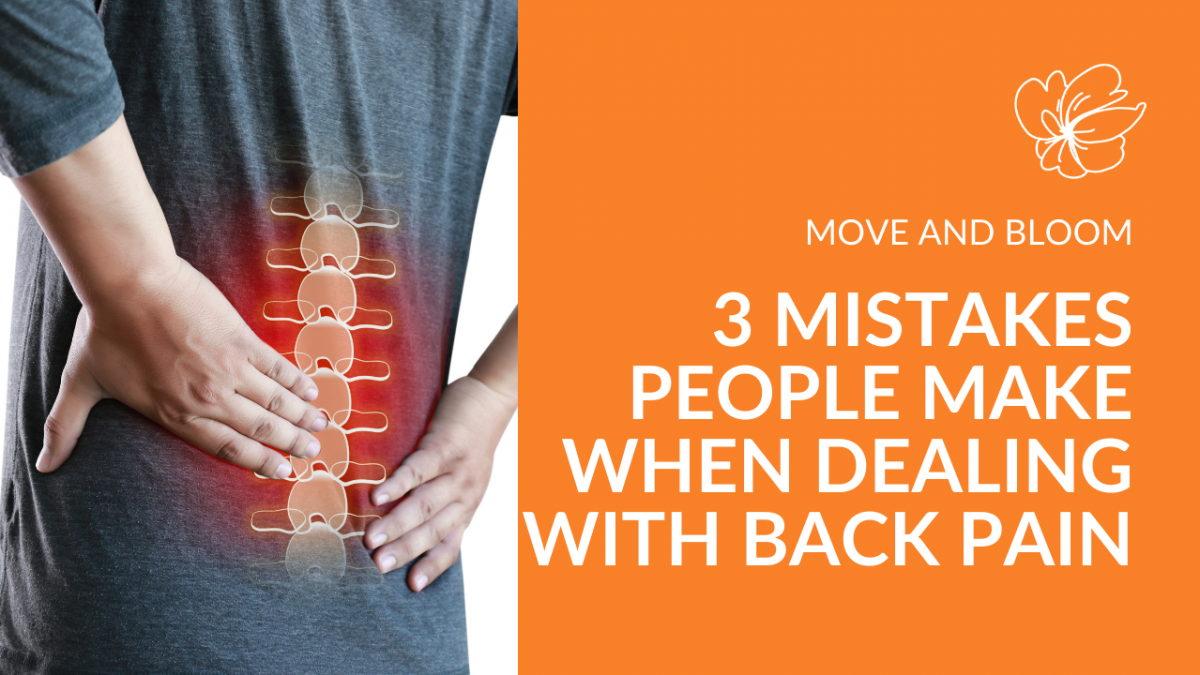3 Mistakes People Make when Dealing with Back Pain

Things I Wish I Had Known Sooner
We don’t know what we don’t know.
When we know better we do better. Before I trained to become a Somatic Movement Educator, I didn’t know the 5 Things You Never Knew About Back Pain. So, I made mistakes when trying to recover from injury. See if any of the following sound familiar to you:
#1 - Stretching to try and heal an injury

Stretching is often prescribed to increase muscle length. If our muscles are chronically tense, though, all we do as we stretch is tear muscle fibers. We may get some increase in range of motion in the moment, but when our muscles contract again to protect us, we’re right back where we started.
Don’t get me wrong - I love a good stretch! But it can often backfire as a method to treat chronic back pain. To feel better, we need to get to the root of the problem - the brain!
In most cases, brain cells need to signal our muscles to contract. If we have overly tense muscles, it means the brain is sending loud, persistent signals to those muscles to contract. Physical manipulation of the muscle (stretching, massage) may temporarily change the situation, but it won’t last unless we also make changes in the brain.
That’s where Somatic Movement Educator comes in! By moving slowly and gently in the context of functional movement patterns, we give the brain the rich information it needs to find our ideal trajectory. Through an organic learning process, our brains learn to organize our movement so that we contract the right muscles at the right time with the right amount of force.
As we begin to let go of habitual, chronic contractions, we begin to feel better!
#2 - Strengthening our core to get low back pain relief

It’s all over the internet: titles like “5 Core Exercises You Need for Lower Back Pain Relief”. I should know: I searched for articles like this when I was desperately searching for a solution to my shoulder pain. While they didn’t help me, I know some people have had success with them - how?!
As discussed in 5 Things You Never Knew About Back Pain, it may be that simply choosing to engage in any non-impact movement practice is beneficial. Humans were built to move. If we’re immobile for too long, we suffer any number of health issues, back pain included. So, if you’re not a mover, starting to move at all may make a huge difference for you.
That said, it doesn’t matter how much we move or how strong we are if we’re not coordinated. I was quite buff when I caused my yoga-related injury. Some might say it was because I was not doing the asanas properly despite having a master teacher on hand to correct me. After training as a Somatic Movement Educator, I have another idea about that.
We all need to know how to coordinate our movements so that we never work against ourselves. In all likelihood, I was overly contracted in muscle groups I needed to release. I was working against myself all the time. It’s like trying to leave the house with the parking brake still on. And as my husband often reminds me, that wears out the parking brake. (Oops!)
Instead of using all that force, I learned to move so that my skeleton carries the weight of my body more efficiently. Bones are our structural support. When we make them the cornerstone of staying ups, we use less muscular effort and feel better.
#3 - Always tightening the core

Believe it or not, I think this may have been what contributed most to my injury. Contracting my belly and holding my ribs in tight was an old habit - one I learned in ballet as a tiny tot. Given our culture’s fascination with flat bellies, I never gave up the habit. As a result, I handicapped the rest of my body.
Think about it - if I want to use my bones as structural support, what happens when I tie some of them down and still expect the others to move freely? If you can't picture it on a human body, think of a car.
What happens in all those old comedies when someone ties the bumper of a car to a heavy object? Either the car can't move, or the bumper comes off!
It's the same with the human body. If I over-contract one part of my body while expecting neighboring parts to move, I begin to experience some stress around those areas that are meant to move as part of a team.
This can be a lot to digest, especially in a culture that likes to learn about bodies by understanding parts in isolation. To get a better feel for how Somatic Movement Education works, drop in on my live Community Zoom Class. We explore slow, gentle movements that are suitable for anyone comfortable sitting, standing, and lying down.
See you soon!
Categories: : Back Pain, My Story, Natural Pain Relief
 Ana Maria Pardo
Ana Maria Pardo 